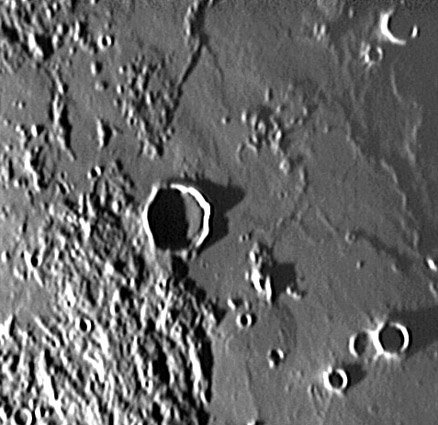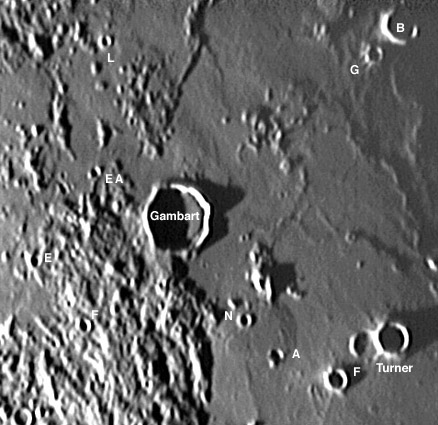June 25, 2015
Gambart Environs
Originally published June 24, 2004
Image Credit: Jim Phillips |
|
Gambart Environs South of Copernicus is the flat floored, 25 km wide crater Gambart. This is a member of a class of relatively fresh looking craters with smooth rims and rough polygonal outlines. Some researchers have argued that Gambart-like craters are volcanic calderas, while other scientists interpret them as secondary craters from the formation of impact basins. But for this image, Gambart is more important as a guidepost to interesting but subtle topography. South and west of Gambart is a hilly, almost corrugated low terrain that was explored further south near Fra Mauro by Apollo 14. This material is crushed rock excavated when Imbrium was formed 3.84 b.y. ago - it is basin ejecta. Such ejecta must extend all around Imbrium but in many places where the elevation is low it has been buried by more recent mare lavas. Just north of Gambart is a low swelling about 14 km wide made when this lava was emplaced. But much more interesting is the 29 km swelling between Gambart M and Turner A (mouseover for designations). This low feature is similar to the Valentine Dome in northwestern Serenitatis. Its nearly the same size, is similarly flat, and is also cut by a small rille just visible on its west flank. Great image, Jim! Technical Details: Related Links: Yesterday's LPOD: Concentric Craters Tomorrow's LPOD: Cassini Observed |
Author & Editor: |
COMMENTS?
Register, Log in, and join in the comments.





